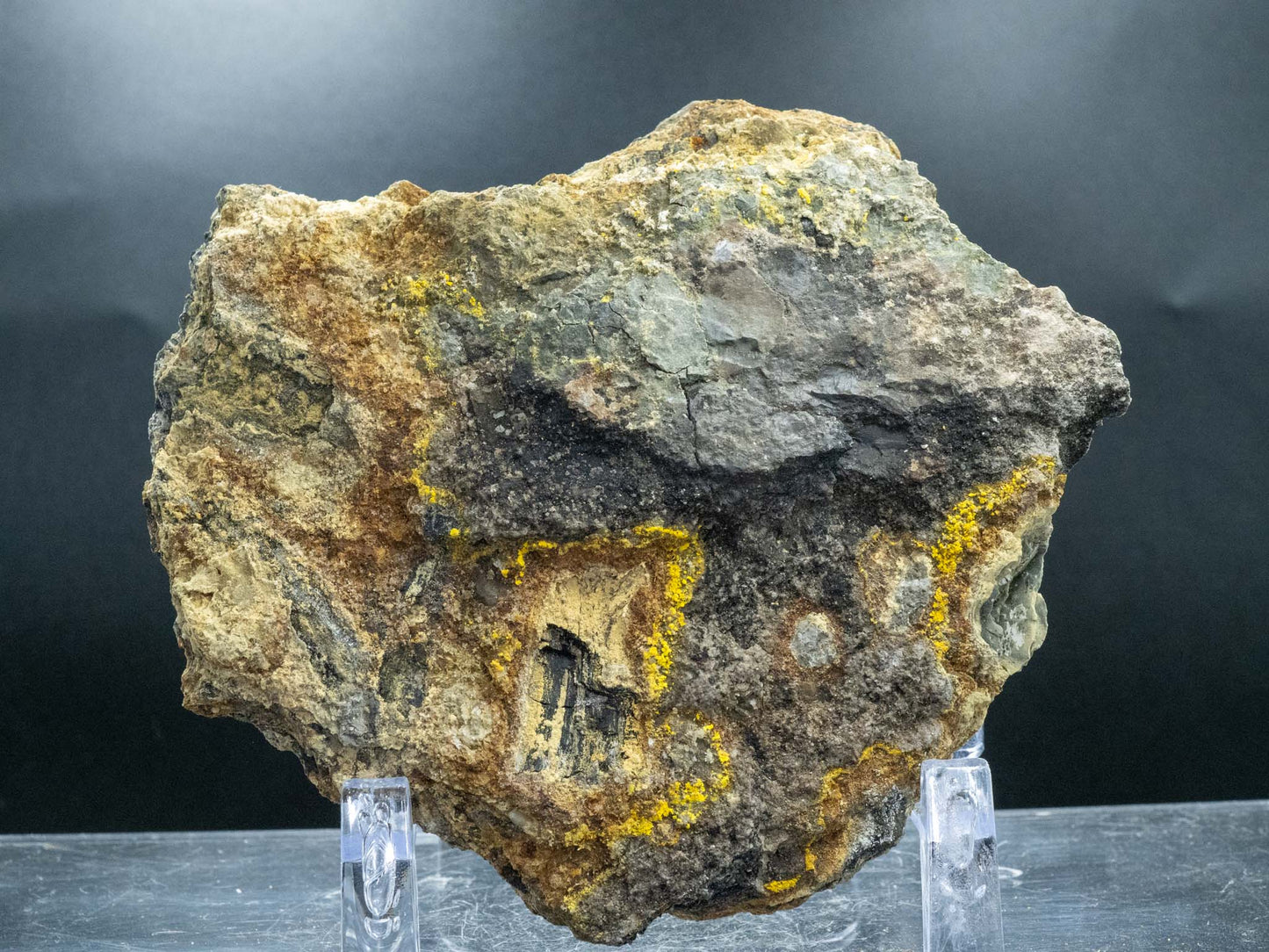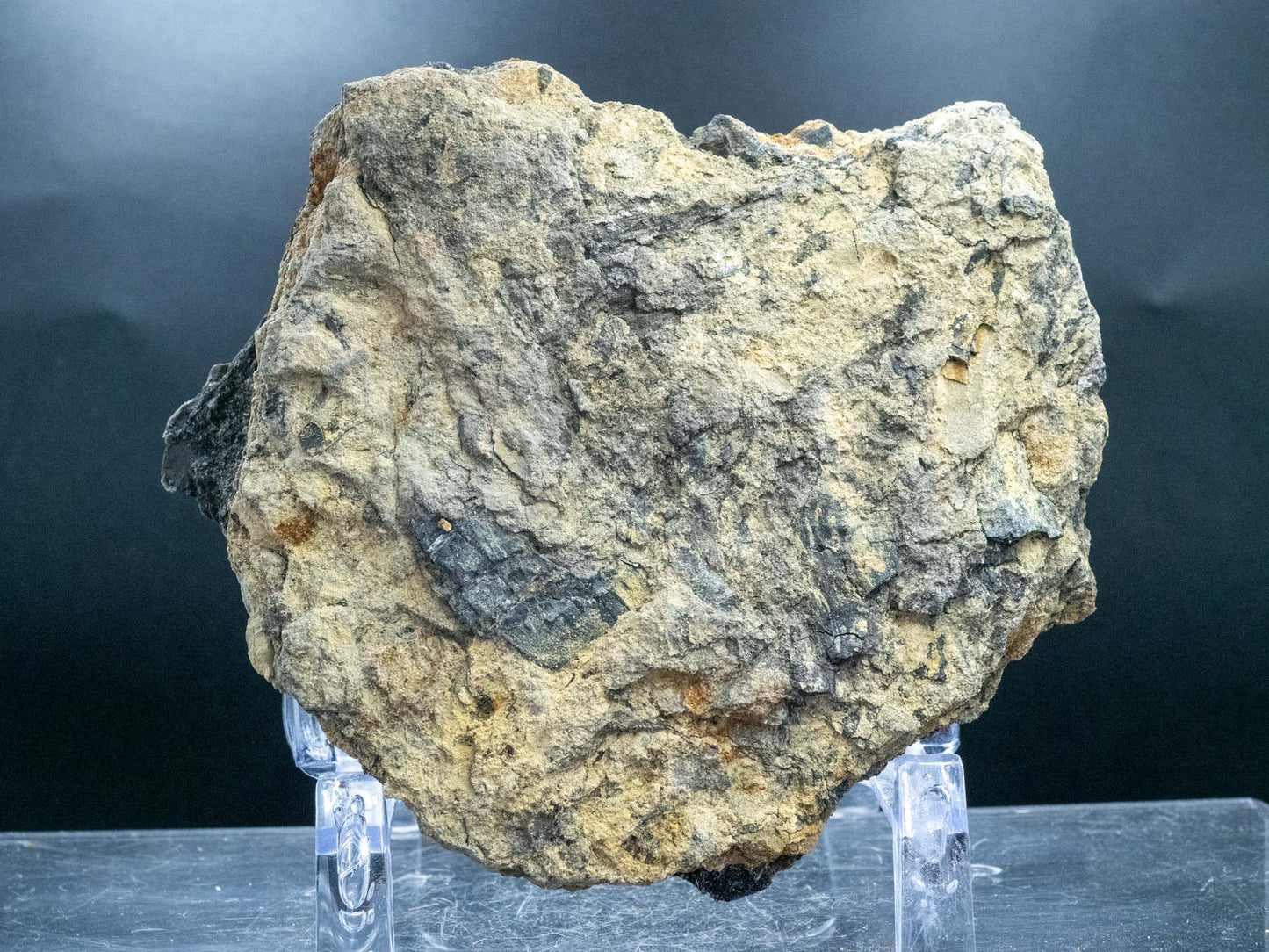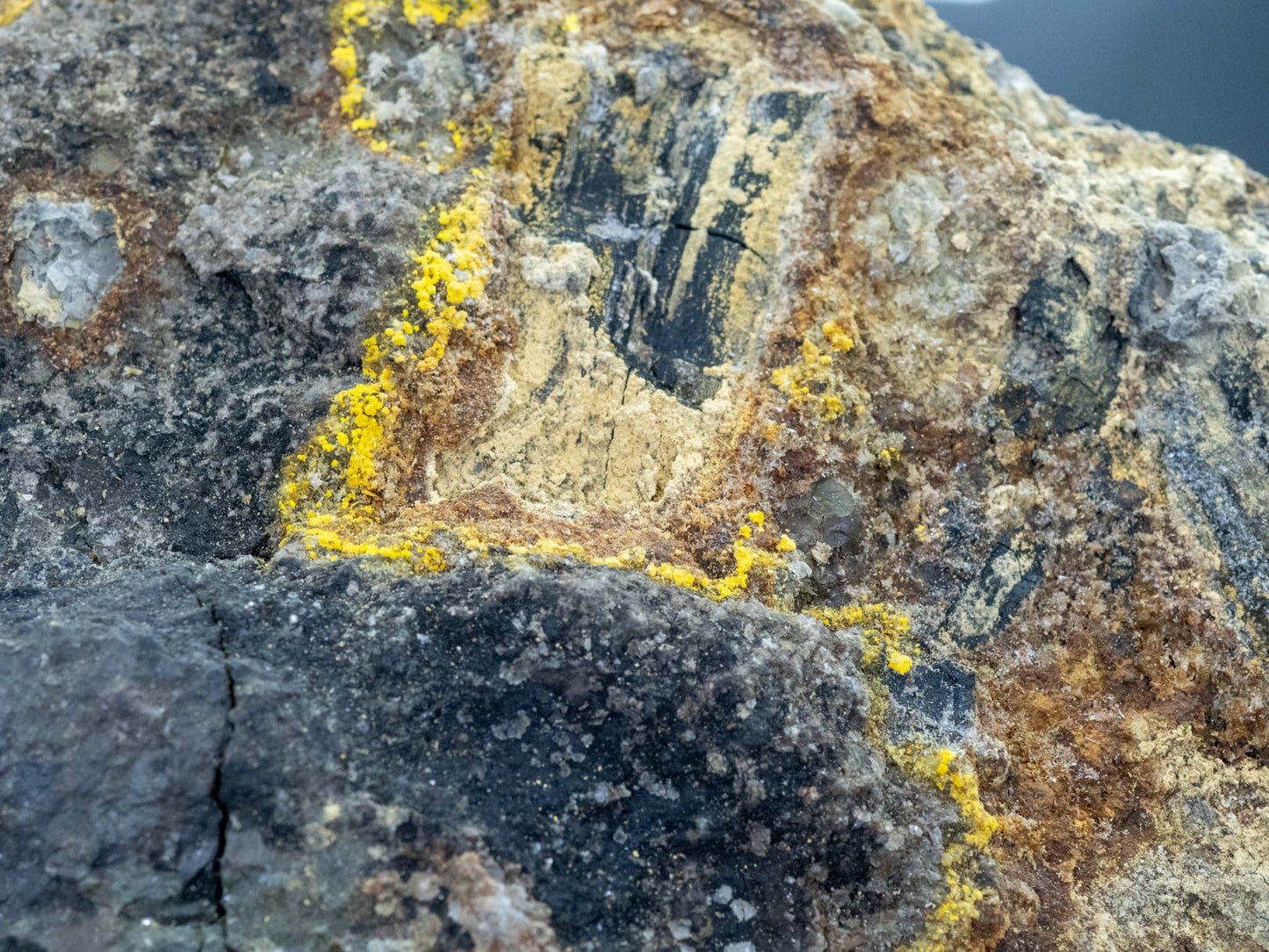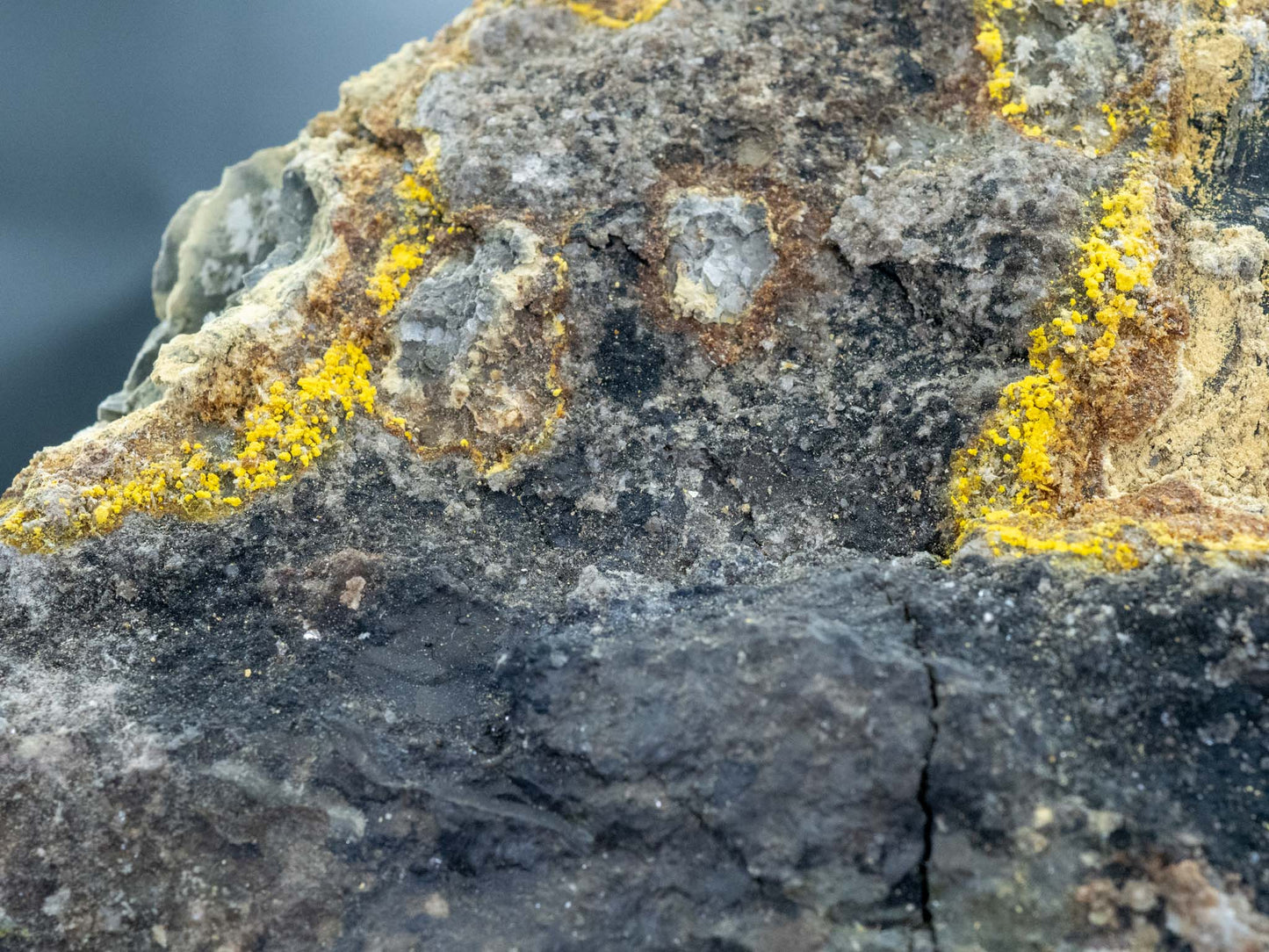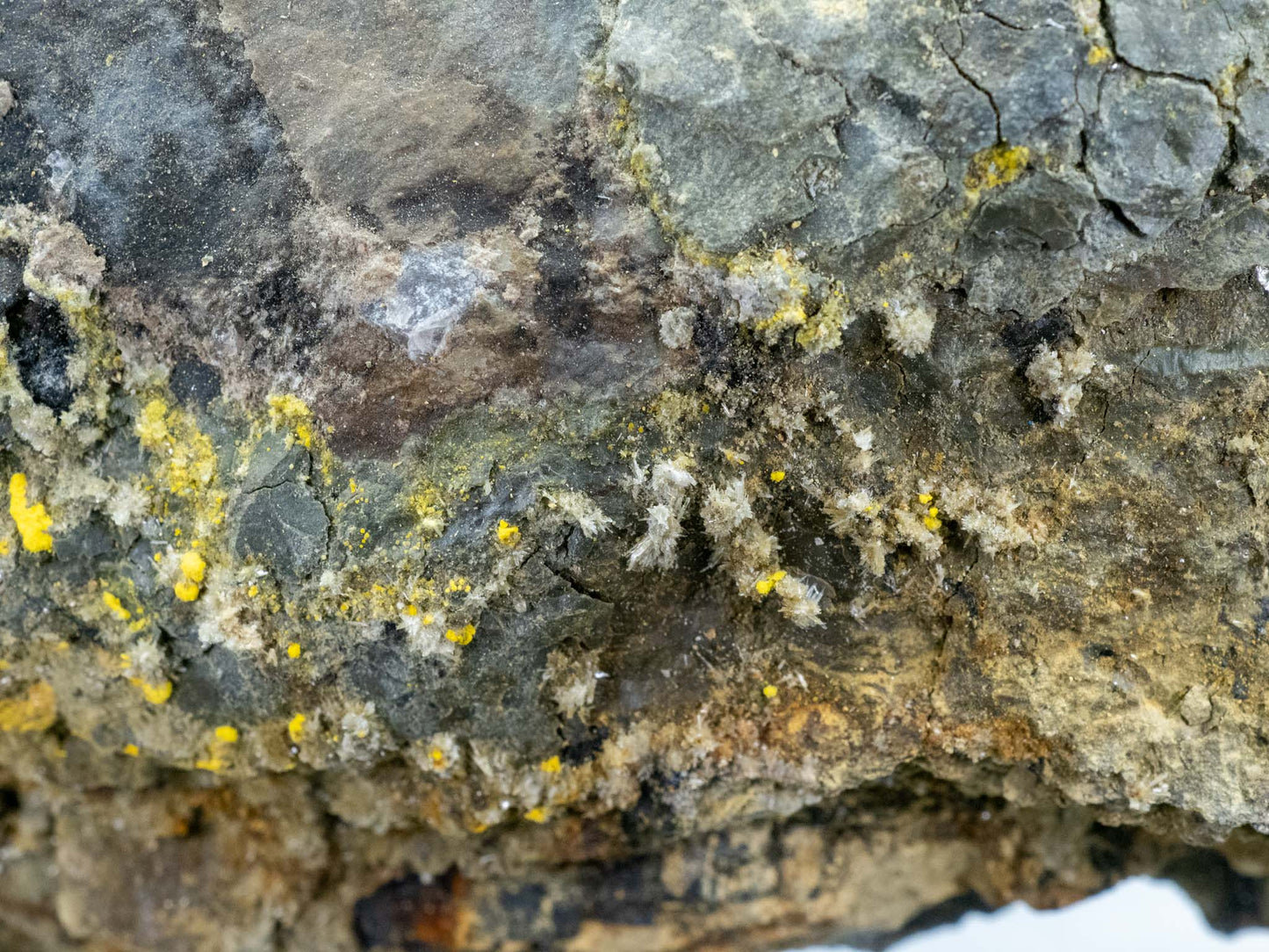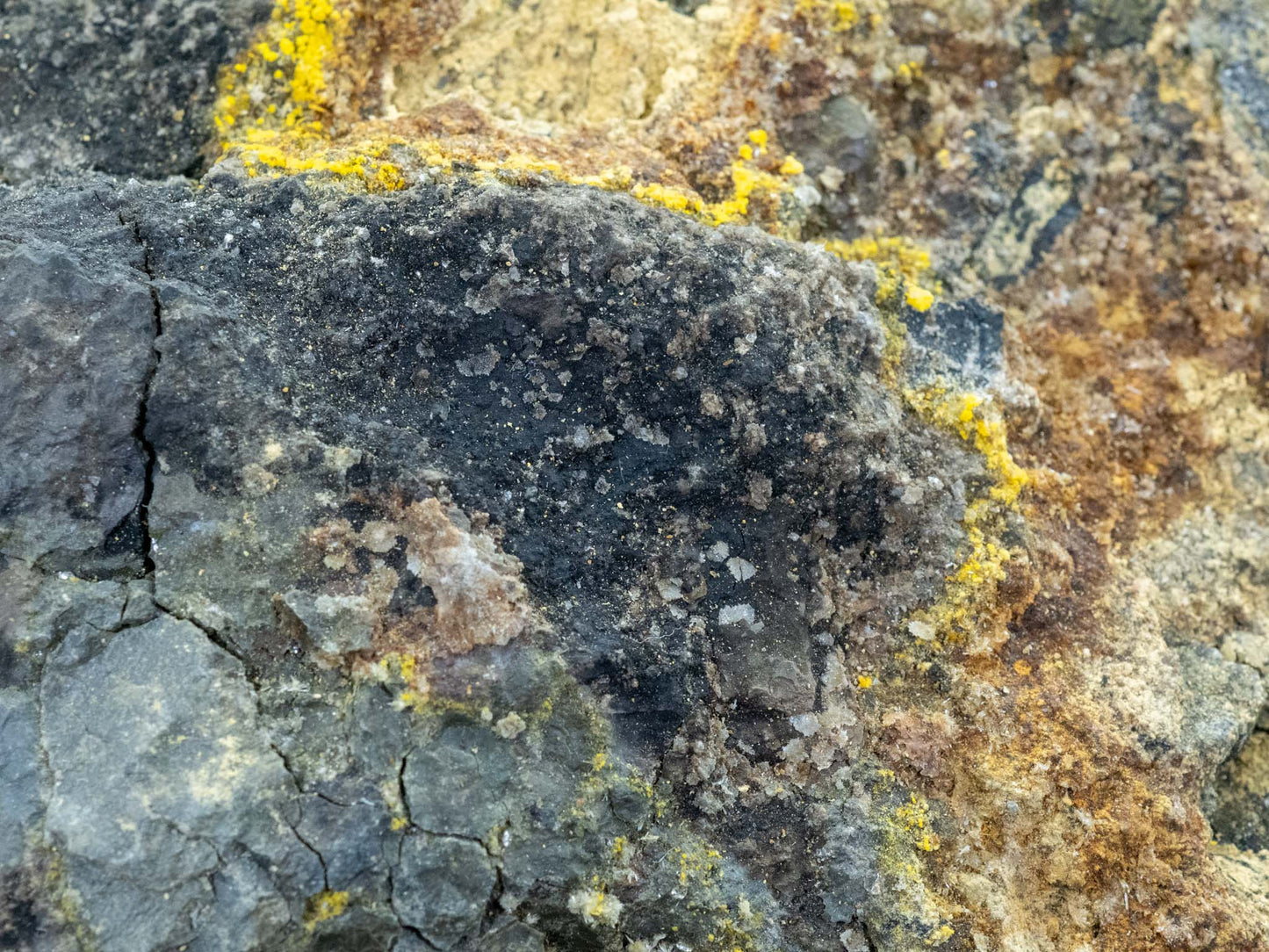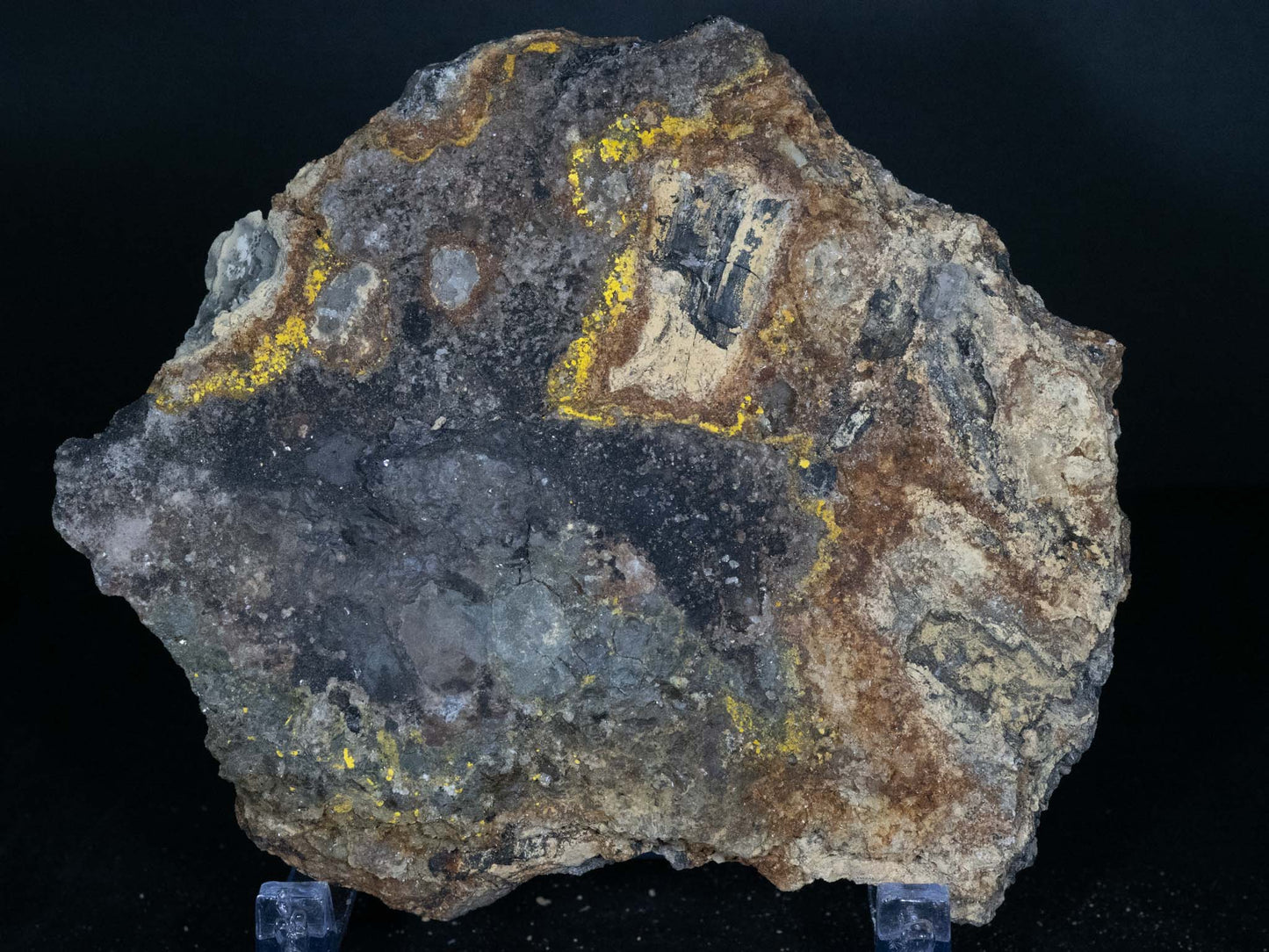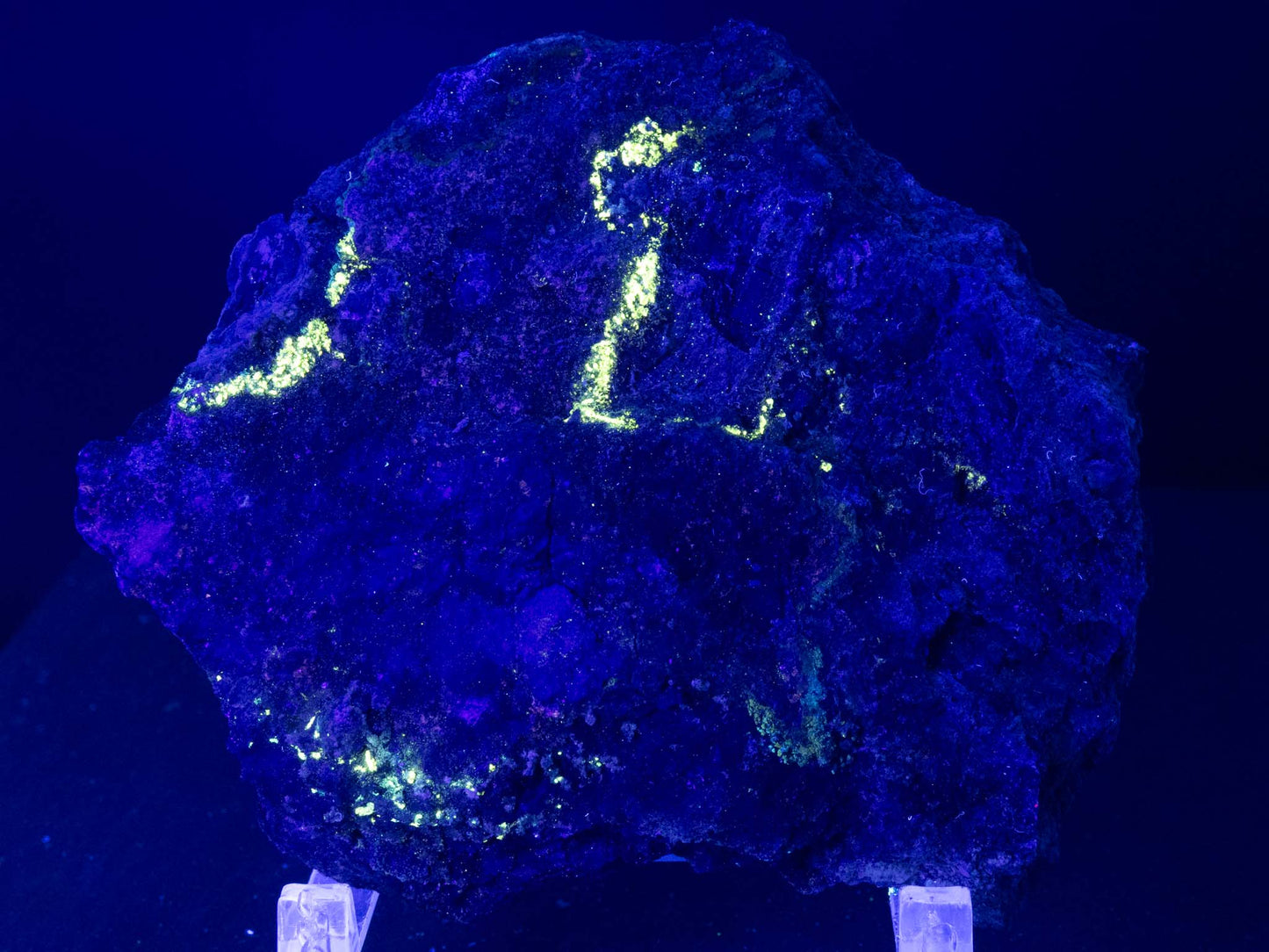Rad Man Minerals
Uraninite, Carnotite, Tyuyamunite - Mi Vida Mine, Lisbon Valley Mining District, San Juan County, Utah, USA
Uraninite, Carnotite, Tyuyamunite - Mi Vida Mine, Lisbon Valley Mining District, San Juan County, Utah, USA
Couldn't load pickup availability
 UO2 K2(UO2)2(VO4)2 · 3H2O Ca(UO2)2(VO4)2 · 5-8H2O
UO2 K2(UO2)2(VO4)2 · 3H2O Ca(UO2)2(VO4)2 · 5-8H2O
The Mi Vida Mine, located in the Lisbon Valley Mining District of San Juan County, Utah, is a historically significant site known for its rich deposits of uranium and vanadium minerals. Among the notable minerals from this locality are Uraninite, Carnotite, and Tyuyamunite, which collectively represent the primary and secondary stages of uranium ore formation in this area. These minerals were central to the uranium mining boom of the mid-20th century, driven by the demand for nuclear fuel and weapons.
Uraninite () is the primary uranium mineral at the Mi Vida Mine, serving as the principal ore of uranium in the district. It occurs as dense, black, and metallic masses or disseminations within the sandstone host rock of the Salt Wash Member of the Morrison Formation. The uranium-rich fluids that infiltrated these permeable sandstones during diagenesis and later geological processes facilitated the precipitation of uraninite in reducing environments. The mineral's high density and characteristic black luster make it visually distinctive and a key indicator of uranium ore zones.
Carnotite () is a vibrant yellow secondary uranium-vanadium mineral that forms in oxidized zones of the Mi Vida Mine. It typically occurs as crusts or powdery coatings along fractures and cavities in the host rock. Carnotite forms when uranium-bearing fluids oxidize and react with vanadium-rich environments, creating striking yellow deposits that are easily recognizable in the field. This mineral was an important source of uranium and vanadium during the mine's operation, with vanadium being a critical material for strengthening steel.
Tyuyamunite () is chemically and visually similar to carnotite but contains calcium instead of potassium in its structure. It also forms as a secondary uranium mineral in oxidized zones, often associated with carnotite. Tyuyamunite is characterized by its yellow to greenish-yellow color and occurs as thin films or aggregates on sandstone surfaces. Its formation reflects the mobility of uranium and vanadium in oxidizing environments, similar to carnotite, but under slightly different chemical conditions.
The Mi Vida Mine is part of the Lisbon Valley Mining District, a region where the Morrison Formation hosts significant uranium-vanadium mineralization. The formation’s sandstone beds, enriched with organic material and permeability, provided a favorable environment for the deposition of uranium and vanadium minerals. Reducing conditions facilitated the formation of uraninite, while subsequent oxidation led to the creation of secondary minerals like carnotite and tyuyamunite.
The uranium and vanadium minerals from the Mi Vida Mine played a pivotal role in the U.S. uranium industry during the Cold War era. Specimens of uraninite, carnotite, and tyuyamunite from this locality are highly prized by collectors for their historical importance, vibrant coloration, and associations with the broader geological story of uranium mining in the American West. These minerals also serve as excellent examples for studying the geochemistry of uranium deposits and the processes of ore formation in sandstone-hosted systems.
Approx. specimen size: 140mm x 120mm x 30mm
Approx. specimen activity: 21000 cpm
